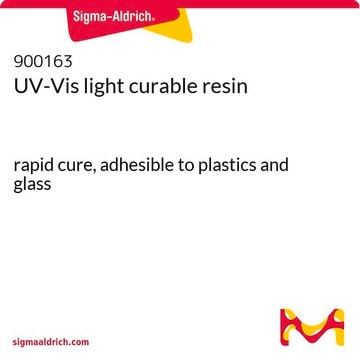915556
HNMB
≥98%
Sinonimo/i:
4-[(E)-[(2-hydroxy-1-naphthalenyl)methylene]amino]-3-methyl benzoic acid, Aggregation-induced emmision (AIE) materials, Mechanochromic luminescent (MCL) materials
Scegli un formato
About This Item
Prodotti consigliati
Livello qualitativo
Saggio
≥98%
Stato
solid
Colore
white
Punto di fusione
292.9 °C
Assorbanza UV
λ: 317 nm Amax
λ: 443 nm Amax
Stringa SMILE
N(=C\c2c3c(ccc2O)cccc3)/c1c(cc(cc1)C(=O)O)C
InChI
1S/C19H15NO3/c1-12-10-14(19(22)23)6-8-17(12)20-11-16-15-5-3-2-4-13(15)7-9-18(16)21/h2-11,21H,1H3,(H,22,23)/b20-11+
HCGGUBXKKWXERU-RGVLZGJSSA-N
Categorie correlate
Applicazioni
In biology, pressure could direct the folding-unfolding of protein molecules, guide blood stream and even control the cell migration. The complexity with these cases makes the monitor and measurement of pressure from conventional force sensor based on classical mechanics impractical. Based on mechanical sensitive materials with ingenious design at the molecular level, a new way to detect pressure is developed. And mechanochromic luminescent (MCL) materials have formed a vital part of such materials. They are intentionally endowed with the ability to change luminescence property (e.g., emission wavelength, emission intensity and lifetime) under mechanical force, which can be readily detected by naked eyes or instruments. As molecule-based sensors, they are compatible to various flexible substrates and arbitrarily curvilinear surfaces, facilitating many applications.
Codice della classe di stoccaggio
11 - Combustible Solids
Classe di pericolosità dell'acqua (WGK)
WGK 3
Punto d’infiammabilità (°F)
Not applicable
Punto d’infiammabilità (°C)
Not applicable
Scegli una delle versioni più recenti:
Certificati d'analisi (COA)
It looks like we've run into a problem, but you can still download Certificates of Analysis from our Documenti section.
Se ti serve aiuto, non esitare a contattarci Servizio Clienti
Possiedi già questo prodotto?
I documenti relativi ai prodotti acquistati recentemente sono disponibili nell’Archivio dei documenti.
Active Filters
Il team dei nostri ricercatori vanta grande esperienza in tutte le aree della ricerca quali Life Science, scienza dei materiali, sintesi chimica, cromatografia, discipline analitiche, ecc..
Contatta l'Assistenza Tecnica.






